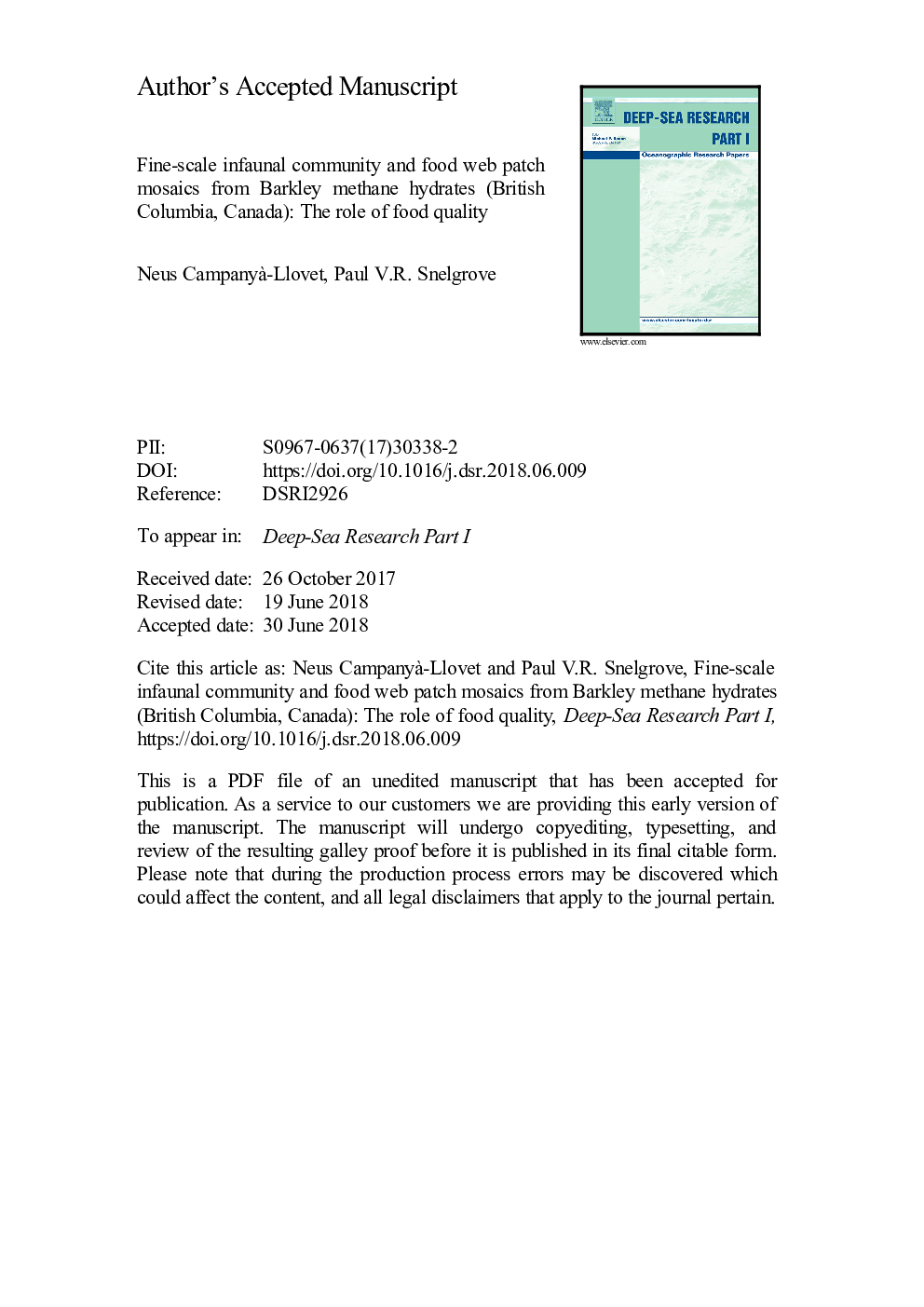| کد مقاله | کد نشریه | سال انتشار | مقاله انگلیسی | نسخه تمام متن |
|---|---|---|---|---|
| 11008182 | 1840470 | 2018 | 45 صفحه PDF | دانلود رایگان |
عنوان انگلیسی مقاله ISI
Fine-scale infaunal community and food web patch mosaics from Barkley methane hydrates (British Columbia, Canada): The role of food quality
ترجمه فارسی عنوان
جامعه مجتمع در مقیاس بزرگ و موزاییک پچ وب سایت مواد غذایی از هیدراتهای متخلخل برکلی (بریتیش کلمبیا، کانادا): نقش کیفیت غذا
دانلود مقاله + سفارش ترجمه
دانلود مقاله ISI انگلیسی
رایگان برای ایرانیان
کلمات کلیدی
ماکروفوانا، تنوع اشباع سرد، ناهمگونی، رسوب، منبع غذایی،
موضوعات مرتبط
مهندسی و علوم پایه
علوم زمین و سیارات
زمین شناسی
چکیده انگلیسی
In order to assess the influence of organic matter patchiness on deep-sea biodiversity, we examined organic matter patchiness and macrofauna at small spatial scales (meters - 100â¯s of meters) in a chemosynthetic environment (Barkley methane hydrates, British Columbia continental slope, ~900â¯m depth). Specifically, we assessed quantity, quality, and sources of organic matter and their influence on the associated infaunal community and food web structure (feeding guild composition) at the methane outcrop, as well as at sites 20â¯m and 600â¯m away. We found greater patchiness in food composition at the outcrop site (containing clam beds) than the more distant locations. Trophic diversity (ES[10]) was significantly greater at the outcrop compared to that at the 20â¯m site, suggesting that the outcrop added rather than replaced trophic niche opportunities. Diversity (ES[10]) was lower at the outcrop compared to the other two sites, although not significantly so. We re-analysed the community data at higher spatial resolution (5-10â¯m, and lower replication) to identify the distance of influence of the hydrates habitat and found a transition from outcrop to background at 9 and 15â¯m away from the most active site, with greater similarity in the communities at 28â¯m to those at 600â¯m than the outcrop itself. Although not major controlling factors, food quality (i.e., nutritional value for benthic organisms) and source played a significant role in determining food web structure, outweighing the influences of food quantity and sediment type. However, our distance-based linear model (distLM) using all variables, food quality, or topography explained only 33.56%, 33.54%, and 33.18% respectively of the total variation in feeding guild composition, suggesting important roles for other environmental variables. We conclude that the higher food patchiness in Barkley Hydrates compared to ambient sediments likely contributed to increased trophic niche opportunities. We emphasize the importance of sampling at adequate spatial scales to detect the limits of the influence of methane hydrates in infaunal communities and food webs.
ناشر
Database: Elsevier - ScienceDirect (ساینس دایرکت)
Journal: Deep Sea Research Part I: Oceanographic Research Papers - Volume 140, October 2018, Pages 186-195
Journal: Deep Sea Research Part I: Oceanographic Research Papers - Volume 140, October 2018, Pages 186-195
نویسندگان
Neus Campanyà -Llovet, Paul V.R. Snelgrove,
